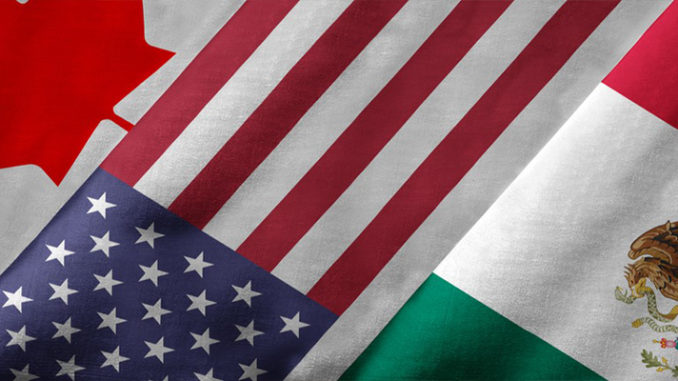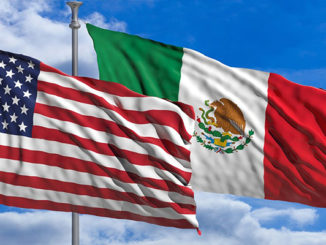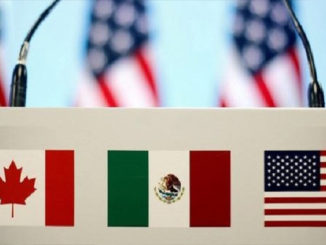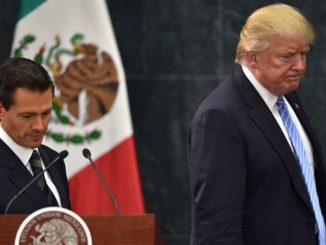
As President Biden’s announcement made clear, trade is but one part of the APEP framework. To achieve greater prosperity LAC needs improved transportation and digital infrastructure, better education systems, and a greener energy matrix.
by Antoni Estevadeordal and Eric Miller
At the recent Summit of the Americas in Los Angeles, U.S. President Biden launched the AmericasPartnership for Economic Prosperity (APEP), 3 which aims to ensure, among other things, “sustainable and inclusive trade.” Although short on details, APEP comes at an inflection point in Latin America and the Caribbean (LAC). The region has been pummeled economically by COVID-19 but is also poised to benefit from nearshoring if regionalization of global supply chains accelerates. If properly given substance, APEP could mature into a platform that enables broad-based economic growth and prosperity in the years ahead. This paper will argue that the United States-Mexico-Canada Agreement (USMCA)—the remake of the North American Free Trade Agreement (NAFTA)—can be a cornerstone of an enhanced trade interconnectivity initiative that the U.S. needs to realize these broader goals for the region.
Echoes of 1994
The last inflection point in LAC’s economic history came in the aftermath of the Cold War. Coming out of the stagnation of the 1980s, the region’s leaders understood that they needed greater connectivity to international trade networks to drive economic growth.
This debate coalesced in 1994 with the launching of four distinct pathways: (1) At the global level, the creation of the World Trade Organization (WTO) offered a multilateral system for governing international trade; (2) At the hemispheric level, the launch of the Free Trade Area of the Americas (FTAA) negotiations aimed at a hemispheric free trade zone; (3) At the subregional level, the Protocol of Ouro Preto transformed Mercosur from a free trade area to a customs union, modernizing LAC’s traditional integration model; and (4) At the bilateral level, and in North America, NAFTA was a groundbreaking trade agreement, the first between a developing country in LAC and the developed Northern partners.
Ultimately, the NAFTA model became the dominant approach to economic integration in the region. The WTO stalled as a forum for trade negotiations, the FTAA failed, and Mercosur became increasingly protectionist and inward-looking. Today, there are two groups of countries in LAC trade. The first group includes countries such as Chile, Peru, Columbia, and Panama who apply comprehensive NAFTA-style agreements that underpin low tariffs and a close connection to North American and global markets. The second group of countries that includes Brazil and Argentina prioritized subregional integration goals, resulting in a less dense network of trade agreements and less robust integration with the U.S. and global markets.
For the first group, its network of free trade agreements has generated myriad economic benefits. Yet, it has also resulted in overlapping agreements and rules that increase costs and complexities. Establishing greater connectivity among these “likeminded” agreements would be an important step forward for regional competitiveness.5 The participation of the United States as the hemisphere’s largest economy, would be fundamental.
How USMCA can catalyze APEP
APEP, like its recently launched sister initiative with Asia, the Indo-Pacific Economic Framework for Prosperity (IPEF)6, reflects U.S. trade politics in 2022. Trade Promotion Authority has expired in the U.S. and the Biden administration appears uninterested in seeking its renewal wary of a political backlash from negotiating comprehensive trade agreements. In this environment, the accession of new partners to existing U.S. free trade agreements such as USMCA is not workable. A better approach would be to focus on interconnecting and making more efficient the current network of trade agreements in the region.
How might this work in practice?
Taking USMCA, the Americas’ most far-reaching agreement as the cornerstone, the U.S., Canada, Mexico, the Central American countries, Colombia, Peru, and Chile would identify certain technical disciplines in USMCA and their agreements for interconnection.7 LAC countries without NAFTA-style agreements, but that are interested in a more expansive level of trade connectivity could also participate in the discussions. Initially, the countries would choose areas that are not especially political and do not require Congressional approval, such as:
Rules of origin cross-cumulation. These technical rules determine whether products are “originating” and thus can benefit from a trade agreement. Several trade agreements in the region allow some form of “cross-cumulation”—the ability to count content from non-member countries in meeting the origin thresholds. For example, the U.S.-Central America Agreement (CAFTA-DR) allows for limited use of Mexican and Canadian yarns and fabrics for certain woven apparel items.8 The Pacific Alliance and Canada have applied similar principles. Under the rubric of ACEP, the U.S. could work with likeminded countries with similar free trade agreements to better interconnect these rules of origin with those in USMCA, focusing first on those products most likely to deepen the regionalization of global value chains, such as in autos and medical devices.
Regulatory cooperation. At the 2022 Summit of the Americas, 13 countries agreed to a Declaration on Good Regulatory Practices.9 The declaration focuses on transparency and predictability in regulatory processes but does not advance mutual recognition or equivalence processes in regulations that would allow goods to cross borders without having to undergo additional assessment for conformity with domestic regulations. Using USMCA rules10 as the standard, the United States and partner countries could, for example, work with select professional services bodies to develop mutual recognition agreements for select professions. They also could work on equivalence processes or information-sharing obligations for certain food, plant, and animal products.
Digital economic integration. A key USMCA update to the original NAFTA framework was the inclusion of a robust chapter on digital trade.11 Many LAC countries are looking to further benefit from the digital economy. Taking the themes and, as applicable, the text of USMCA as a starting point, the parties could work toward appending robust digital trade chapters to other agreements in the region. If successful, it could perhaps evolve into a broader Americas Digital Trade Agreement. In addition, building on USMCA Article 1907, a broader cooperation agreement on cybersecurity could be another important deliverable.
Trade facilitation. In Chapter 7, USMCA establishes a Trade Facilitation Committee to advance work in this area. While not formally required in USMCA, Canada recently mandated the use of surety bonds by (mostly) all importers to guarantee their obligations, including future penalties, to the government. The U.S. has had this system of “customs bonds” in place since the 1930s. Such surety bonds are cost-effective to the importers and give customs services the confidence to release goods quickly from customs control. The system is in place in a variety of other jurisdictions, from China to Jordan. It would greatly enhance release times if this regime was implemented in LAC.
Conclusion
As President Biden’s announcement made clear, trade is but one part of the APEP framework. To achieve greater prosperity LAC needs improved transportation and digital infrastructure, better education systems, and a greener energy matrix. Regional bodies, such as the Inter-American Development Bank, have crucial roles to play in supporting these areas. The Americas are divided politically, making consensus on anything in the trade area very challenging. Thus, the guiding principle in the years ahead must be “pragmatic incrementalism”—seeking consensus when, where, and with whom we can find it. In time, as these efforts yield benefits for some countries, others sitting on the sidelines may come to feel compelled to engage.



